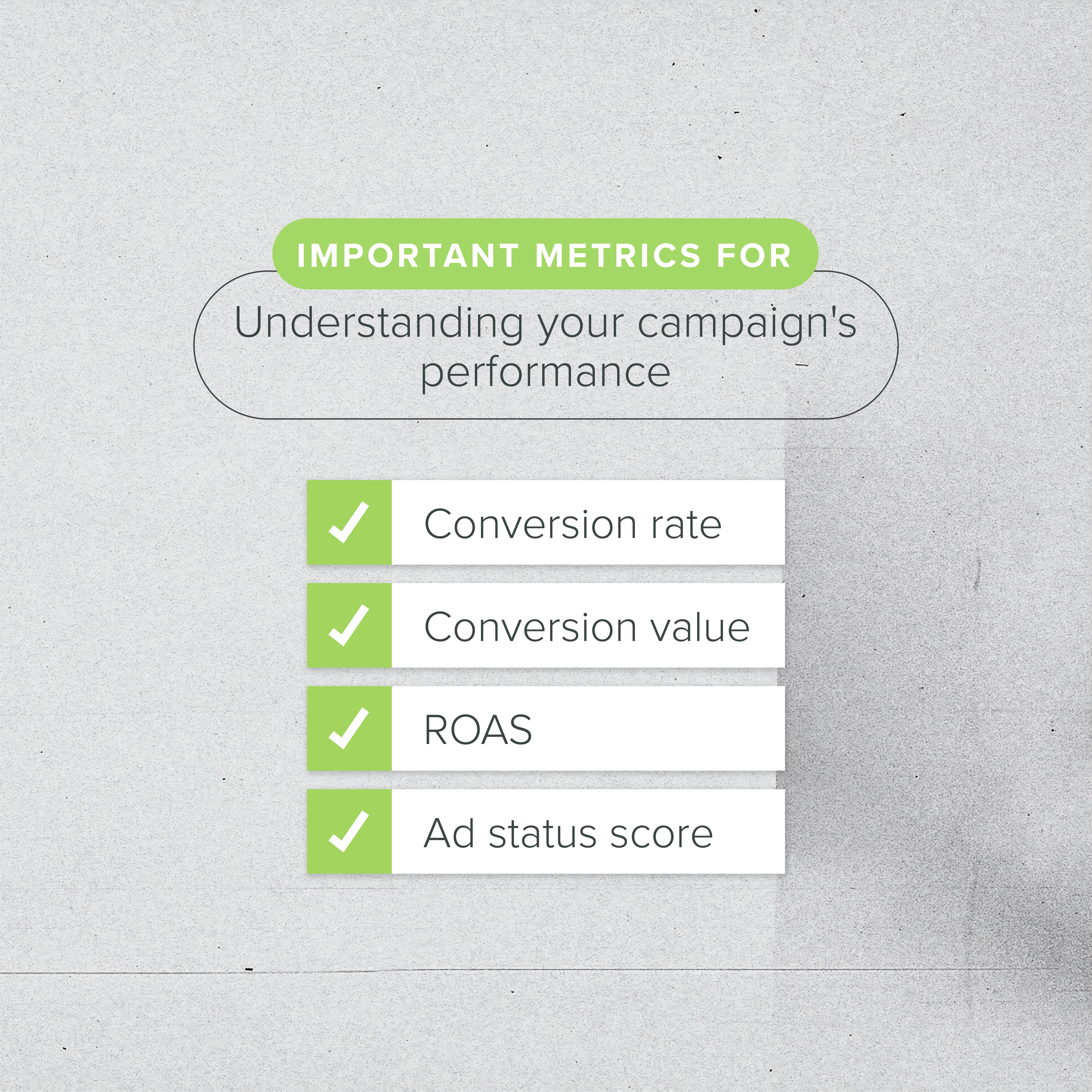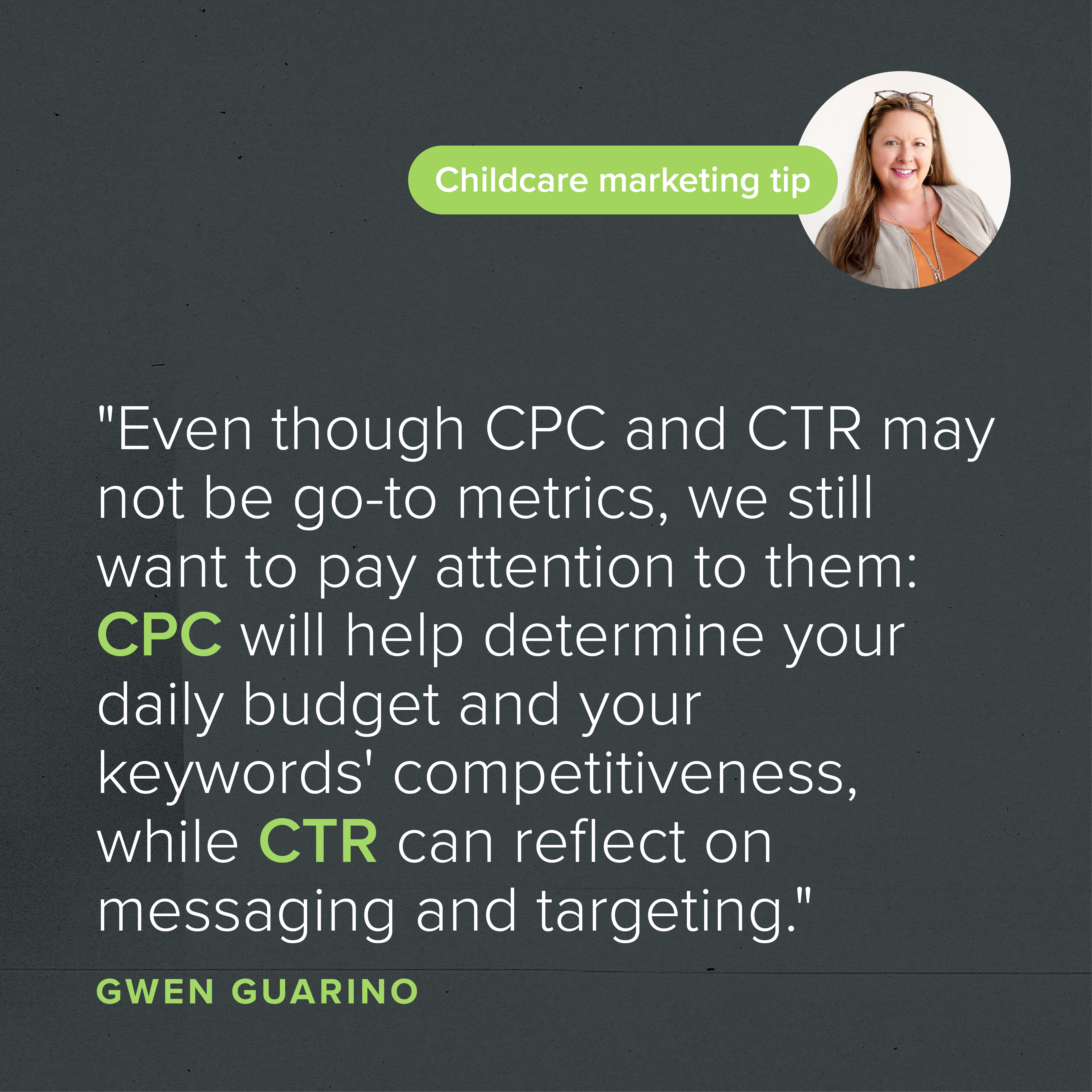In the past, CPC (cost per click) and CTR (click-through rate) were the go-to metrics used to judge ad campaign success.
While these metrics are still important to track, they’re not the strongest indicators of campaign success. In fact, they can even be misleading. At times, business owners see these numbers and worry their ad campaigns are failing.
“Why is my CPC so high?”
“Why is my CTR so low?”
Keep reading to learn why CPC and CTR aren’t the most important metrics anymore, and what your business can track instead.
What Is CPC, and Why Isn’t It a Go-To Metric?
CPC is the price you pay per click based on the auction for your ad.
Many people believe the lower their CPC is, the better their ads perform. This vein of thought makes sense — after all, we all want a “good deal.” When something looks like a bargain, it seems “better.” It tricks us into thinking we’re saving money, or at least not wasting money.
In this case, that simply isn’t true.
Trying to get the lowest CPC devalues your ad and can lead to missed opportunities. For example, if you have the lowest CPC, you may only get 5% of the clicks you’d get with a higher CPC on a different keyword or ad campaign.
The point of running ads isn’t to spend the least amount of money; it’s to generate the highest return.
For this reason, simply targeting the lowest CPC doesn’t make sense. Instead, you may need to spend more on relevant ad placement to get a better return. It costs more up front, but then you make more than enough to justify the expense.
As every business owner knows, you have to spend money to make money. The trick is to spend it wisely.
What Is CTR and Why Isn’t It a Top Metric Anymore?
CTR is the number of clicks on an ad divided by the number of impressions (how often your ad displays on a user’s device).
CTR indicates your ad copy’s ability to influence users to click the ad. People strive for a high CTR.
However, CTR is relative to ad type. You can’t compare CTRs from one ad type to another, though many people make the mistake of trying.
For instance, you may see that your Performance Max campaign has a 2% CTR and your Keyword campaign has an 8% CTR. That’s a pretty big variance. And then there’s your Display campaign with a CTR of 1% — which seems pretty low.
But the truth is, the “optimal” CTR range for all these ad types varies. Display campaigns, for example, target very differently and show to a much wider audience — meaning a CTR of 1% is great.
Unfortunately, there’s no way to accurately compare and analyze your click-through rates at the account level. Trying to do so gives you incomplete or misleading information because you’re comparing apples to oranges.

Metrics You Should Pay Attention To
Now that we’ve discussed why CPC and CTR aren’t worth paying too much attention to, let’s review the metrics that are worth your attention.
Conversion Rate
Your conversion rate is the number of conversions divided by the number of clicks. Unlike CTR, it’s not based on impressions.
You may have a 1% CTR and an 8% conversion rate. It’s the 8% that matters. You need to optimize for conversion rate if your ad strategy is conversion-based.
Conversion Value
To calculate the conversion value, multiply the number of conversions by the value you’ve set for a completed action.
Assigning a value to an action can be tricky. Here’s an example: For a childcare center, we apply a $350 value to a completed form, because that’s the lowball estimate of a one-month enrollment for a child.
When you optimize for this, you should see your conversions increasing, which results in a higher conversion value.
Return on Ad Spend (ROAS)
Calculate ROAS by dividing your conversion value by your ad spend. ROAS is the best way to approach your strategy and targeting because it calculates your actual return. It’s much more informative than CPC or CTR because it reflects revenue and speaks to your ultimate goal.
Ad Status Scores
While technically not a “quality score,” ad status is still important. The higher you score, the better you’ll do in auctions (when bidding for ad placements against competitors).
Ad status scores can be poor, average, good, or excellent. Scoring better earns you preference over competitors and access to the most valuable auctions.
Are CPC and CTR Still Useful?
Even though CPC and CTR aren’t our go-to metrics, we still want to pay attention to them in certain contexts.
- CPC helps determine your daily budget and your keywords’ competitiveness.
- CTR reflects on messaging and targeting. It can help your ad copy hone in on the right audience. For example, it can help make sense of A/B testing results.
So, while CPC and CTR still have value, look to the four metrics we discussed for the most accurate understanding of your campaign’s performance:
- Conversion rate
- Conversion value
- ROAS
- Ad status score
If you’re preparing to run Google Ads or if you’re interested in optimizing your current campaigns and would like a helping hand, we’d love to chat about what we can do for you. We’re just a message away!

Subscribe
Sign up with your email address to receive news and updates.

